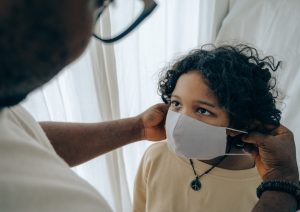LatinaLista — The horror stories of what happens to women who are illegally in the United States are the kinds of stories that evoke both sympathy and rebuke for the women. Sympathy for having to endure such torture and rebuke for putting themselves in the situation in the first place.
Yet, as immigration attorney Kavitha Sreeharsha outlines in her report “
Reforming America’s Immigration Laws: A Woman’s Struggle“, published by the Immigration Policy Center in June, what happens to these women are a direct result of what officials acknowledge is an antiquated immigration process into the United States.
Sreeharsha’s report explores how women are specifically harmed by heightened enforcement of immigration laws. “Abusers, traffickers, and exploitative employers keep immigrant women from seeking local law-enforcement protection by convincing them that police officers are working in partnership with DHS and will deport victims instead of protecting them.”
In turn, these enforcement measures are increasing the likelihood of abuse and assault against these women by making them afraid to seek help and at the same time empowering their perpetrators to exert more control over their victims, never worrying about legal retribution.
(Editor’s note: The following is a condensed version of the report. The full report delves deeply into how specific enforcement measures are putting these immigrant women at risk and what Washington can do to solve the problem.)
Reforming America’s Immigration Laws: A Woman’s Struggle
by Kavitha Sreeharsha
There are roughly 19 million immigrant women and girls currently in the U.S. Immigrant women, particularly the undocumented, are often more vulnerable than their male counterparts, lack the same economic opportunities, and experience exploitation while crossing the border.
Contrary to public discourse which often omits any discussion of women immigrants, nearly half of the foreign-born population in the United States is female. Immigrant women are very diverse in terms of country of origin, age, education, labor force participation, and poverty level. They work tirelessly alongside immigrant men, and in some fields of employment comprise the majority of the labor force.
According to a 2005 report by the Immigration Policy Center, 8.3% of employed immigrant women were business owners in 2000, compared to 6.2% of employed native-born women. In addition to the 563,814 immigrant women business owners, 1,054 immigrant women across the United States were CEOs of not-for-profit organizations. At one extreme, many foreign-born women have professional school or doctorate degrees, but there are also many immigrant women who lack even a high school diploma.
From the beginning of the migration process, women are often at a disadvantage. Faced with an employer-sponsorship system that hinges on education, specialized occupational needs, and economic opportunity, women are less likely than men to qualify under the current requirements of employment-based immigration. Many more women immigrate through family sponsorship than as employment-based immigrants.
(However,) the family immigration system has been fraught with backlogs and burdens that sometimes separate families for more than 20 years. The backlogs force women to wait in their home countries, separated from the sponsoring family member with whom they seek reunification. While separated, many of these women are left as the sole providers in countries where women may lack the same economic and employment opportunities as men.
The overburdened family-based system often creates circumstances where women living abroad must choose between waiting in lengthy backlogs or entering the U.S. unlawfully and, in many cases, unsafely. Approximately 4.1 million immigrant women in the U.S. are undocumented.
Women outside the United States may risk unsafe and unlawful migration to the United States to reunify with their families, seek economic opportunities, or escape other dangers. Women who migrate unlawfully by crossing the U.S.-Mexico border, for example, are far more vulnerable to unsafe conditions and are particularly at risk for sexual assault.
A United Nations representative estimated that 70% of women who cross without spouses or other families are sexually assaulted during the border crossing. Advocates report that women are encouraged to take birth control pills before traveling across the border in anticipation of the sexual assault.
The current dialogue about immigration reform focuses on the efforts to protect all undocumented immigrants. Yet immigrant women’s experiences remain on the periphery of the debate, and the unique experiences and compromises faced by immigrant women are often forgotten.
Many immigrant women are separated from their families by borders, and cannot reunite due to U.S. immigration backlogs. Many immigrant women are victims of violence whose likelihood of victimization is enhanced by a system that disadvantages them. Many immigrant women are low-wage workers with less opportunity for upward mobility and less legal protections. Many immigrant women are the silent victims of a broken system.





